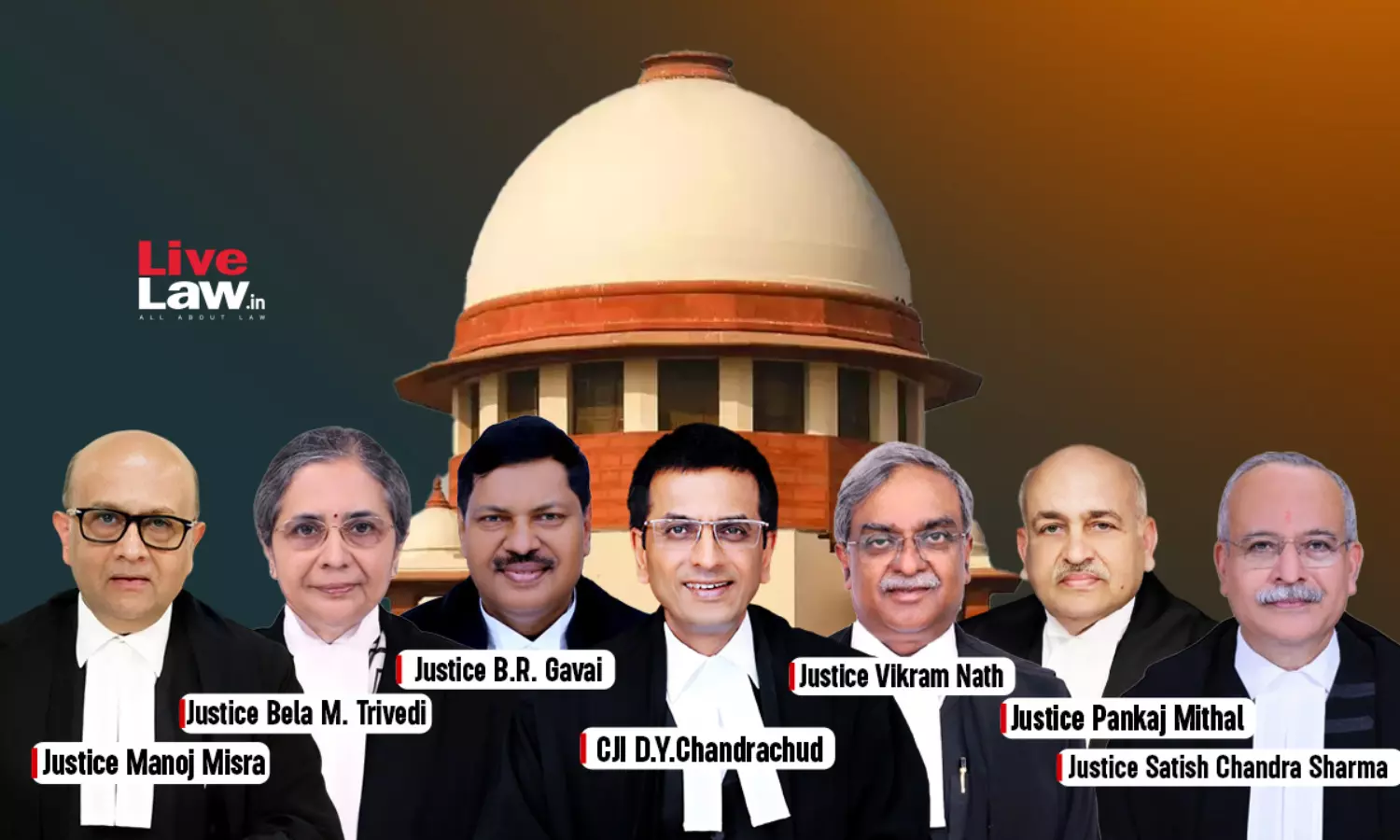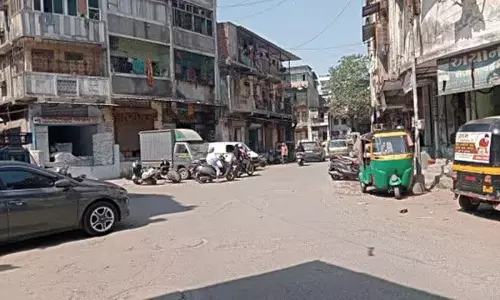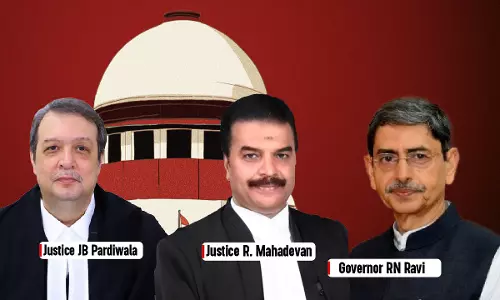Sub-Classification Of Scheduled Castes For Reservation, Creamy Layer Debate – Comment On State Of Punjab V. Davinder Singh (7 Judge-Bench Judgment)

A seven-judge bench of the Supreme Court on 1 August 2024 decided the issue of constitutionality of sub-classification within the Scheduled Castes for the purpose of reservation in public employment. The question was whether the State can give preferential treatment to some castes over other castes within the list of Scheduled Caste notified under Article 341 of the Constitution, based...
A seven-judge bench of the Supreme Court on 1 August 2024 decided the issue of constitutionality of sub-classification within the Scheduled Castes for the purpose of reservation in public employment. The question was whether the State can give preferential treatment to some castes over other castes within the list of Scheduled Caste notified under Article 341 of the Constitution, based on the argument of some of the castes being more marginalised compared to others among the Scheduled Castes. The Court by a 6:1 verdict declared that such a classification is permissible and overruled the five-judge constitution bench judgment of the Supreme Court in E. V. Chinniah v. State of A. P.
The Chief Justice Dr. D. Y. Chandrachud, authored the main judgment with whom all other judges have agreed except Justice Bela Trivedi. Justice Manoj Misra has concurred with Chandrachud C.J. while Justice R. V. Gavai and Pankaj Mithal have written separate opinions agreeing in entirety with the Chief Justice. Justice Vikram Nath and Justice Satish Chandra Sharma have also agreed with the judgment of the Chief Justice while separately reiterating their agreement with Justice Gavai on the principle of the application of creamy layer in the Scheduled Caste. Justice Bela Trivedi has given the lone dissent. The Chief Justice has disagreed with Chinniah in respect of both the grounds of the Chinniah decision. Firstly, in respect of the issue of sub-classification being violative of Article 14 and secondly, the lack of legislative competence of the legislature to do so. The Court declared that the historical and empirical evidence suggests that Scheduled Castes are heterogenous class and that it is not a homogenous and integrated class. Thus, the Court held that a reasonable classification is permissible applying the test of intelligible differentia under the Constitution and therefore the sub-classification per se would not violate the promise of equality under Article 14 of the Constitution.
However, the classification must be based on data showing inadequacy of representation of the classified group in the public service and the data must also show that the inadequacy of representation is on account of the backwardness. It also clarified that the inadequacy of representation must show inadequacy of effective representation and not simply quantitative representation. By effective representation, it meant that inadequacy has to be measured across the public service posts because the marginalisation of Dalit castes for example, would remain, if they only serve at the lower grades in the public employment. Chief Justice quoted Justice Jeevan Reddy from Indra Sawhney[2] case where Justice Reddy had stated that the principle test to determine the inadequacy of representation is effective representation or the effective voice in the administration and not mere numerical presence. Thus, the empirical data has to be both quantitative and qualitative. The Chief Justice therefore, disagreed with the observation made in M. Nagaraj[3] that the adequate reservation of the class or group must be measured against the cadre and held that it is against the plain language of Article 16(4) and Article 16 (4-A) of the Constitution.
Chief Justice Chandrachud has further clarified that though the sub-classification is possible but each caste in the Scheduled Caste cannot have separate reservation because the backwardness suffered by each caste is not so much substantially different. Therefore, if the social backwardness of two or more castes is comparable, they may be grouped together. He further stated that any sub-classification must not eliminate the possibility of castes or groups competing for the seats under the Scheduled Caste category.
On the issue of legislative competence, Chief Justice held that Chinniah wrongly conflates the issue of competence with Article 245 and 246 read with the entries of VII Schedule of the Constitution with the power of ensuring substantive equality under Article 15 and 16. He held that the legislative power to make such a sub-classification flows from Articles 15(5) for educational institutions and 16(4) in case of public employment. He further clarified that this sub-classification cannot be equated with the exclusive power of the Parliament under Article 341(2) of the Constitution to exclude or includes any caste, race or tribe from the list of Scheduled Castes notified by the President of India under Article 341(1) of the Constitution.
The view of the majority is sound in so far as it attempts to focus on the logic of such classification and avoids an arm-chair approach about the unreasonableness of such sub-classification flowing from the constricted and exclusionary reading of Article 341(2). It also seems to exhibit the deference towards the actions of the political class. However, the collection of data for effective representation insisting on a qualitative data on the yardstick of 'voice in the administration' is going to be a minefield for future litigation. Also, it is worth noting that Jarnail Singh[4] only in the year 2018 has put to rest the question about the yardstick for giving reservation in promotion to Scheduled Castes introducing the concept of creamy layer in the Scheduled Castes. The State legislatures or the Union Parliament is yet to make a law following the logic of Jarnail Singh. It means that no enabling law has so far come to ensure the participation of Scheduled Castes in higher echelons of government service via reservation in promotion. Participation of Scheduled Castes in the higher grades of public employment is already scarce, to find representation of castes within these higher-grade jobs would be difficult. This would make the practical possibility of a law enabling sub-classification, all the more difficult. Prior to Jarnail Singh, legislatures found the condition of quantifiable data as mandated by M. Nagaraj to provide reservation in promotion to Scheduled Caste and Scheduled Tribe very onerous, which clearly shows that this present requirement would also be onerous.
However, the most debated aspect of this judgment is the declaration by Justice B. R. Gavai that the principle of the application of creamy layer to Scheduled Castes and Scheduled Tribes is a correct position in law. Justice Gavai further added that the criteria for the identification of creamy layer in Scheduled Castes and Scheduled Tribes may be different from the other backward castes. This declaration by Justive Gavai has been endorsed by Justice Vikram Nath, Justice Pankaj Mithal and Justice S. C. Sharma. The reference to this seven bench was not about the correctness of the application of creamy layer principle to Scheduled Castes and Scheduled Tribes, yet the four out of seven judges have endorsed its application. This is a rare occasion where an observation in respect of an issue which is not directly an issue in the case, finds support from the majority of judges in a seven-judge Constitution bench verdict.
It is worth noting that the non-application of creamy layer in Scheduled Castes and Scheduled Tribes reservation has been a consistent policy of the Union and the States in India. This has also found endorsement from the Supreme Court of India except in the matter of reservation in promotion as held in Jarnail Singh. The idea behind the non-application of creamy layer in Scheduled Castes and Scheduled Tribes is based on the premise that the extent of social backwardness is too pervasive here to bring in an individual specific economic criteria. So, the policy acknowledges that some of the individual beneficiaries may actually come from the affluent economic backgrounds. The sub-classification issue in Scheduled Caste and the issue of application of creamy layer in the Scheduled Caste are not identical issues, yet the declaration of validity of sub-classification would inevitably give rise to the debate about the application of creamy layer principle among the Schedule Caste.
Justice Gavai has observed that the criteria for identification of creamy layer in Scheduled Castes and Scheduled Tribes may be different from the other backward castes and it is submitted that the test prescribed by the Supreme Court as the legitimate basis for sub-classification may become the basis for the determination of creamy layer among the Scheduled Caste. However, this classification must come with a caveat that unlike the other backward caste where the creamy layer is excluded as the beneficiary of quota, the creamy layer in Scheduled Caste will only have a lesser and relative share in the total quota of the Scheduled Caste and they cannot be completely ousted from quota earmarked for Scheduled Caste . Chief Justice Chandrachud in his judgment has categorically identified that the preference for marginalised within the Scheduled Caste should not be on the entire quota of Scheduled Caste seats and that it should only be on certain percentage of the Scheduled Caste quota seats, rest of the seats in the Scheduled Caste quota must be open to all other Scheduled Castes. He has further stated that the preferred castes quota seats must become available to the rest of the Scheduled Castes, in case the seats remain unfilled from the candidates from the preferred castes.
Judicial Review by the courts is an occasion to determine the permissibility of a policy, legislative or executive. Desirability of a policy is the domain of the legislature or the executive. The desirability element in judgments, if at all, must be brought with due care by the judiciary because despite being obiter, it is the appeal by the constitutional courts about a policy which is a constitutional imperative. The collective reading of the sub-classification issue with the creamy layer issue may reconcile the possible inconsistencies that may come in identifying the two issues separately. It is important to note that despite the permissibility of sub-classification, both with or without declaring the creamy layer among the Scheduled Caste, no Scheduled Caste can be completely ousted from the Scheduled Caste quota and the entire Scheduled Caste quota will remain a Scheduled Caste quota. The non-exclusion of creamy layer in its entirety will ensure that this classification is not adding to the backlog vacancies reserved for the Scheduled Castes, and at the same time the marginalised among the Scheduled Caste to quote Justice Chandrachud will get the first bite at the apple.
Manwendra Kumar Tiwari is an Associate Professor, Dharmashastra National Law University, Jabalpur. Views are personal.




